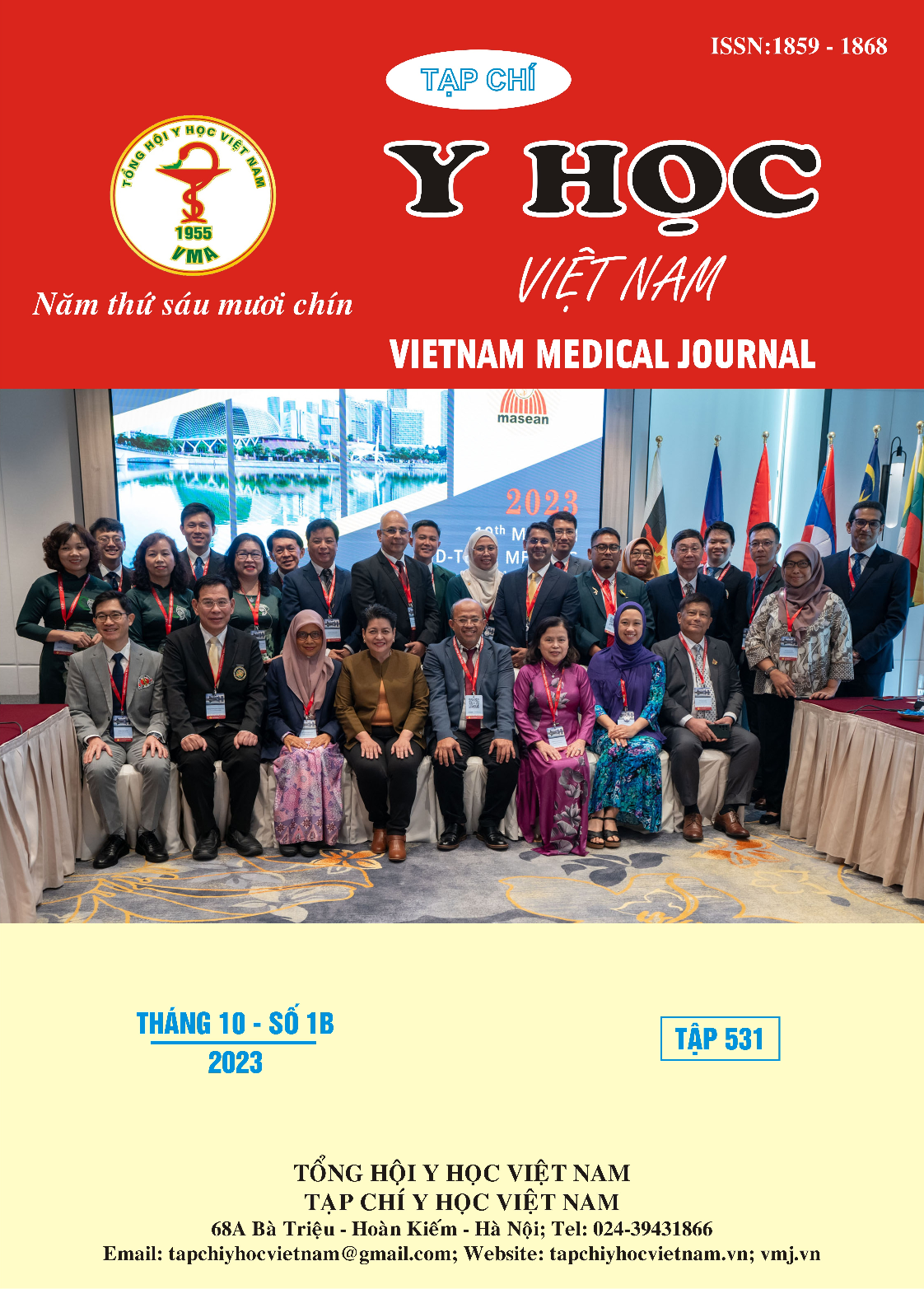CLINICAL FEATURES OF AUTONOMIC AROUSAL SYMPTOMS IN PATIENTS WITH ATRIAL FIBRILLATION WITH COMORBID ANXIETY DISORDERS
Main Article Content
Abstract
Objectives: Describe clinical features of depression in patients with mental and behavioural disorders due to use of alcohol. Subjects and methods: Cross-sectional description of inpatients with mental and behavioural disorders due to use of alcohol fibrillation at Hanoi Psychiatric Hospital from June 2022 to June 2023. Results: Most patients had individual depressive symptoms or mild to moderate depression (accounting for 60% of patients with mental and behavioural disorders due to use of alcohol). Symptoms such as reduced mood, reduced energy were common, accounting for 52,3% and 52,9% respectively. For additional symptoms, sleep disturbance was the most common, with 93,5% patients getting this symptoms. Somatic symptoms were common, with about 40-50% patients getting these symptoms. Auditory hallucination, persecutory delusion, agitation and aggression were most frequently encountered as psychotic symptoms Conclusion: Depressiive symptoms were very common in patients with mental and behavioural disorders due to use of alcohol, however they were mostly mild and moderate. Therefore, they could be masked in the big picture of mental and behavioural disorders due to use of alcohol and go unnoticed.
Article Details
Keywords
Depression, Mental and behavioural disorders due to use of alcohol.
References
2. Chhetri B, Dem U, Letho Z, Tshering K, Skodlar B. Prevalence of major depressive disorder in adult patients with alcohol use disorder admitted in the psychiatric ward at the Jigme Dorji Wangchuck National Referral Hospital, Thimphu, Bhutan. Popul Med. 2023;5(May):1-8. doi:10.18332/popmed/166187
3. Bolton JM, Robinson J, Sareen J. Self-medication of mood disorders with alcohol and drugs in the National Epidemiologic Survey on Alcohol and Related Conditions. Journal of Affective Disorders. 2009;115(3):367-375. doi:10.1016/j.jad.2008.10.003
4. Green MA, Strong M, Conway L, Maheswaran R. Trends in alcohol-related admissions to hospital by age, sex and socioeconomic deprivation in England, 2002/03 to 2013/14. BMC Public Health. 2017;17(1):412. doi:10.1186/s12889-017-4265-0
5. Le Strat Y, Grant BF, Ramoz N, Gorwood P. A new definition of early age at onset in alcohol dependence. Drug and Alcohol Dependence. 2010;108(1-2):43-48. doi:10.1016/j.drugalcdep.2009.11.011
6. Nair UR, Vidhukumar K, Prabhakaran A. Age at Onset of Alcohol Use and Alcohol Use Disorder: Time-trend Study in Patients Seeking De-addiction Services in Kerala. Indian Journal of Psychological Medicine. 2016;38(4):315-319. doi:10.4103/0253-7176.185958
7. Grant BF, Goldstein RB, Saha TD, et al. Epidemiology of DSM-5 Alcohol Use Disorder: Results From the National Epidemiologic Survey on Alcohol and Related Conditions III. JAMA Psychiatry. 2015;72(8):757. doi:10.1001/ jamapsychiatry.2015.0584
8. Odile J.P. Alcoolisme et depression, Mémoire de fin d’étude. Université de Nancy. Bibliotheque Medecine Nancy, 1972: 52-65.


